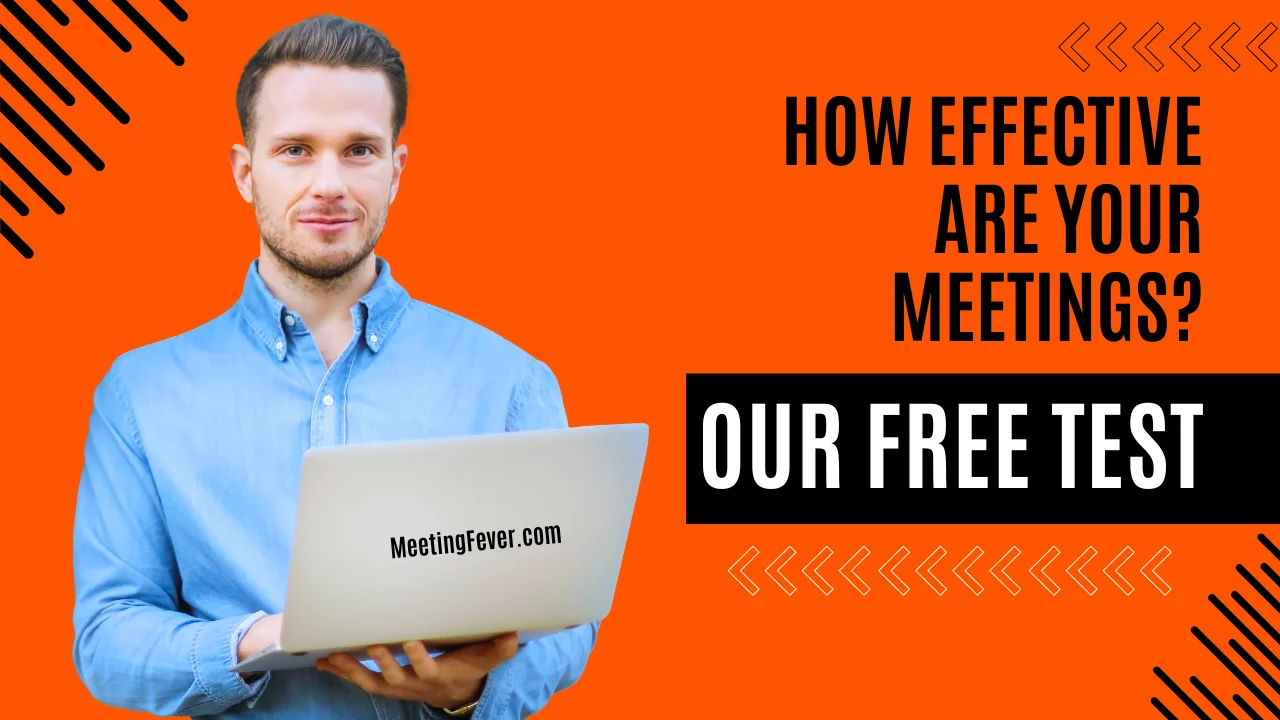A conflict meeting is a type of meeting that is held to address and resolve disputes, disagreements, or tensions that exist within a group, team, or organization. It serves as a platform where individuals involved can openly express their concerns, perspectives, and feelings about the issue, fostering clear discussion and effective communication. The main goal is to reach a solution in a collaborative way, and to also strengthen bonds and understanding among team members in the process. This type of meeting requires effective leadership, active listening, empathy, open dialogue, and negotiation skills.
What is the purpose of a Conflict Meeting?
The purpose of running a conflict meeting as a leader is to address and resolve disputes or disagreements within the team. It allows for open communication, understanding different perspectives, and finding mutually beneficial solutions. Effective conflict management promotes a healthier work environment, boosts morale, and fosters productive collaborations.
How To Run A Conflict Meeting: Step-By-Step
- Step 1: Identifying the Conflict
- Step 2: Preparing for the Meeting
- Step 3: Setting Ground Rules
- Step 4: Discussing the Conflict
- Step 5: Identifying the Needs
- Step 6: Developing Possible Solutions
- Step 7: Selecting the Best Solution
- Step 8: Documenting the Solution
- Step 9: Implementing the Solution
- Step 10: Follow Up
1
Step 1: Identifying the Conflict
The initial step in conflict resolution is acknowledging the presence of a dispute within the team. This calls for comprehensive identification and understanding of the problem at hand. Ensuring that key stakeholders are fully aware and informed of the conflicting issues is critical. They should be briefed about the nature and extent of the issue, the parties involved, and the possible impact on team performance and project outcomes. This open communication fosters trust and paves the way for collaborative problem-solving.
Next Step
2
Step 2: Preparing for the Meeting
Organizing a meeting for conflict resolution requires careful planning. Start by inviting everyone who has a vested interest in the conflict, ensuring all relevant voices are heard. Set a clear, focused agenda that delineates the key issues for discussion, emphasizing a collaborative approach towards problem-solving and resolution of the conflict.
Our application, ZipDo, simplifies the process of preparing for team meetings. Meeting leads can quickly retrieve all relevant information from past sessions, including agendas and notes, stored in one place. This facilitates a smoother preparation process and guarantees no key points are missed.
Next Step
3
Step 3: Setting Ground Rules
At the onset of the meeting, it’s critical to lay down some governing principles. These should foster a culture of clear, open, and respectful dialogue, ensuring every participant feels heard. Moreover, such norms should sternly discourage any form of personal criticism or blame game. This firm foundation sets the tone for focused, efficient, and harmonious discussions.
Recommendation
Advertisement
Have you tried our Meeting Notes Software, yet?
Want to run a better meeting? Try ZipDo, our Meeting Note Software.
Connect your Google Calendar
Automatically create a note for every meeting
Organize your meetings and meeting notes in a channel like Slack
Next Step
4
Step 4: Discussing the Conflict
All parties involved in any conflict must be provided an equitable opportunity to voice their points of view. These discussions should be held uninterruptedly, in a cordial environment that fosters respect and understanding for every individual’s perspective, fostering open-mindedness and fair assessment.
Next Step
5
Step 5: Identifying the Needs
After understanding each party’s point of view, it’s crucial to identify everyone’s needs, which often lie at the heart of the conflict. Recognizing these needs gives deep insight into possible resolutions, paving the way for constructive dialogues that can help settle the dispute effectively and satisfactorily.
Next Step
6
Step 6: Developing Possible Solutions
Encouraging all meeting participants to brainstorm different solutions for the conflict is essential. Foster an environment that nurtures creativity and open-mindedness, reminding participants that every idea, no matter how out-of-the-box, is welcome. This approach promotes collaboration and resolution.
Next Step
7
Step 7: Selecting the Best Solution
After proposing potential solutions, the team must collectively evaluate and choose the most suitable one. This selection should stem from its capacity to address everyone’s needs involved in the dispute, fostering a shared level of satisfaction and maintaining a harmonious working atmosphere.
Next Step
8
Step 8: Documenting the Solution
It’s vital to carefully document the agreed-upon solution as well as the steps required for its implementation. By doing this, it not only provides a tangible and easily accessible reference point, but also ensures alignment among team members. This systematic approach aids in preventing confusion, misinterpretations, or discrepancies in the action plan, fostering smooth and efficient execution of tasks in line with the group’s collective decision.
Next Step
9
Step 9: Implementing the Solution
Following an agreement on a solution, it’s paramount to put this resolution into practice. Ensuring that all involved parties have a comprehensive understanding of their roles is key. This entails having clear duties assigned, timelines established, and resources allocated for successful solution implementation. Creating an environment of collaborative effort aids in facilitating a seamless execution.
Next Step
10
Step 10: Follow Up
It’s critical to schedule a follow-up meeting to evaluate the efficacy of the solution and ensure the conflict has been fully resolved. If the implemented solution falls short, the team might need to reconvene, re-examine the issue, and deliberate on other potential solutions to resolve the problem optimally.
Questions to ask as the leader of the meeting
1. “What is the core issue of the conflict?” – This question allows the leader to identify the main reason behind the conflict, enabling better understanding and resolution.
2. “How do each party’s perspectives differ?” – Understanding the differences in perspectives helps the leader gain insights into the conflicting interests, leading to possibilities for common ground or compromise.
3. “What are the emotions involved in this conflict?” – Recognizing and acknowledging the emotions can help the leader create a safe space for expressing feelings and fostering empathy among the parties involved.
4. “What are the potential underlying factors contributing to this conflict?” – Exploring the root causes or underlying factors provides insights into any systemic issues that may need to be addressed for long-term resolution.
5. “What are the desired outcomes for each party involved?” – Identifying individual objectives encourages open dialogue and facilitates finding mutually beneficial solutions to meet everyone’s needs.
6. “What steps have already been taken to resolve the conflict?” – By understanding previous attempts at resolution, the leader can build on the efforts already made and avoid repeating ineffective strategies.
7. “What are some potential solutions or compromises we can explore?” – Encouraging brainstorming for solutions promotes collaboration and inclusive decision-making, fostering a sense of ownership among the parties.
8. “How can we effectively communicate and ensure understanding between all parties?” – Addressing communication gaps helps prevent misunderstandings and pave the way for constructive dialogue to achieve a resolution.
9. “What support or resources are needed to resolve this conflict?” – Identifying necessary support or resources empowers the leader to provide the necessary assistance to facilitate conflict resolution effectively.
10. “How can we learn from this conflict to prevent future conflicts?” – Reflecting on the conflict helps the leader and the team identify lessons learned and implement preventive measures for future challenges.
11. “Are there any additional concerns or suggestions that need to be addressed?” – Giving everyone an opportunity to voice additional concerns or suggestions ensures that all perspectives are considered and increases the chances of a comprehensive resolution.
12. “What specific actions can each party commit to in order to resolve this conflict?” – Asking for specific commitments helps ensure accountability and creates a roadmap for moving forward towards resolution.
Learn how to prepare a Conflict Meeting
As a leader, preparing a conflict-meeting agenda requires careful consideration. Start by clearly defining the issue and desired outcome. Identify key stakeholders and invite them to the meeting. Include time for sharing perspectives, brainstorming solutions, and reaching a consensus. Ensure a structured format, prioritize active listening, and allocate time for open discussion. End the meeting with action steps and follow-up plans.
How To Prepare For A Conflict MeetingExemplary Agenda Template For: Conflict Meeting
During a conflict-meeting, it is important to address the root causes of the conflict, the impact it has on individuals and the organization, and potential solutions or actions that can be taken to resolve the conflict. Additionally, discussions should focus on effective communication strategies, fostering empathy and understanding, and promoting a positive and inclusive work environment.
See Our Conflict Meeting TemplateSoftware tools to facilitate a Conflict Meeting
Software plays a crucial role in helping leaders effectively manage conflict-meetings. It enables them to structure the meeting, set goals, and allocate time for discussion. Additionally, software facilitates collaboration by providing a platform for sharing ideas, managing conflicts, and tracking progress. Through data analysis and reporting capabilities, leaders can gain insights and make informed decisions, ultimately promoting conflict resolution and fostering a positive work environment.
Our Recommendations:
- Meeting Management Software: A software that can help you organize your meeting workflow
- Meeting Agenda Software: A software that helps you to collaboratively create meeting agendas
- Meeting Notes Software: Software that allows you to create notes during meetings
- Meeting Minutes Software: A software that helps you preparing meeting minutes for your team.
Conclusion
Managing conflict in meetings can be a challenging task, but it is absolutely necessary for the health and productivity of your team and organization. It is crucial to approach these meetings with preparation, clarity, honesty, and a commitment to finding a resolution that is mutually beneficial. Don’t forget the importance of active listening, ensuring all voices are heard, and promoting respectful dialogue. Although conflict is inevitable, its resolution can lead to personal and professional growth, improved group dynamics, more innovative ideas, and a stronger understanding among team members. Remember, the objective is not to prevent all conflict, but to manage it in a way that turns it into a positive force for change and progress.

Jannik Lindner
I'm Jannik and I write on MeetingFever about the experiences from my career as a founder and team lead.
If you have any questions, please contact me via LinkedIn.
Popular Questions
What is a conflict meeting?What are some techniques used in a conflict meeting?How should one prepare for a conflict meeting?What is the role of the moderator or facilitary in a conflict meeting?How do you handle emotions during a conflict meeting?
A conflict meeting is a gathering where individuals or groups come together to discuss and resolve disagreements, disputes, or differences that may have arisen in a personal or professional setting.
Some techniques used in conflict meetings include active listening, open and respectful communication, focusing on interests rather than positions, brainstorming potential solutions, and seeking mediation or neutral third-party assistance if needed.
One should prepare for a conflict meeting by clearly understanding the issues at hand, considering the views and interests of the other parties, planning potential solutions, and preparing to communicate effectively and with empathy.
The facilitator or moderator plays a crucial role in a conflict meeting by ensuring that all parties have an equal opportunity to express their views, guiding the conversation in a productive way, and helping to encourage understanding, compromise, and resolution among the involved parties.
Emotions are often high during a conflict meeting. It’s crucial to address these emotions with understanding and empathy. Allowing venting where appropriate, asking for clarification, and keeping the conversation focused on the problem and solution rather than personal attacks can help manage emotions effectively. It’s also important to take breaks if tensions rise excessively high.



